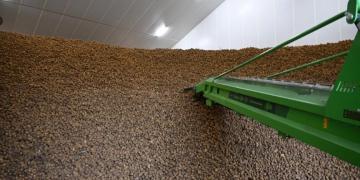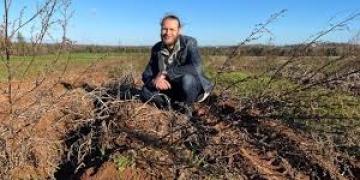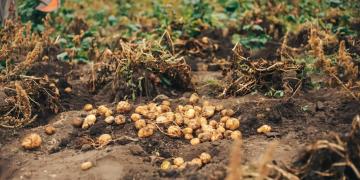Belgium: Weather conditions affect potato cultivation
It has not escaped anyone’s attention that it has been warmer and drier than ’normal’ for some time now. Potato cultivation is also experiencing this, both in the field and in the storage warehouse.

Ilse Eeckhout, team leader Potatoes Viaverda, calls the start of the new potato growing season very special. “Where we had to wait an exceptionally long time last year for optimal soil conditions to plant, we were now able to enter the field at the end of March. Ironically, the conditions of April this year can be called better than those of June last year…”
Weed control
According to her, the dry weather conditions can cause emergence problems for crops that are sown, but she sees this risk much less in potatoes. “Potato emergence problems can possibly be expected in heavy soil and during persistent drought. Due to a lack of moisture, we can also assume that weed control will not be optimal.”
Ilse Eeckhout’s advice is to postpone weed control where possible, until rain is forecast. "But don’t take any risks. It is possible that a number of weeds will escape and post-emergence control will be necessary. However, experience shows that post-emergence control never kills all weeds. Goosefoot, swallow’s tongue, thorn apple... are still difficult to control."
Currently, only metribuzin (among others Sencor), rimsulfuron (Titus) and clomazone (among others Centium) are approved in post-emergence. Please note that the approval of the active substance metribuzin (among others in Sencor, Artist, etc.) expires and that the commercial products containing metribuzin can only be purchased until May 24, 2025. Its use is possible until June 30, 2025.
Germination in the shed
During the 2024-2025 storage season, Viaverda and Inagro will monitor the quality of potatoes in 17 Flemish storage warehouses. To this end, samples are taken every month. When the sample was taken on 7 April 2025, the potatoes were in good condition everywhere.
The most recent sampling does show that germination had clearly increased, especially in sheds with incomplete germination inhibition. The average germination length (of the longest sprout per tuber, 20 tubers per sample) was 2.9 mm on average and varies from 0 to 18 mm. Germination clearly started at the beginning of April compared to the month before. At that time, the average germination length was still 1.4 mm.
In 3 of the 17 sheds, germination inhibition had not yet been started at the time of sampling. In one of the sheds involved, germination inhibition will probably no longer take place, given the germination length of 12.5 mm at the beginning of April. Such germinations are too long to be burned off.
French fries quality improved
The average colour of fries has improved by 0.2 in the 17 warehouses compared to early March. The index is now 2.8 on a scale of 0 (very good) to 6 (very bad) across all warehouses. The current average value is a good frying index, but the values per warehouse do vary greatly: from 2.0 (very good) in the best batches to 4.0 (insufficient).
The disappointing baking colour of the worst performing shed was probably caused by ethylene leakage from an adjacent shed where seed potatoes with Restrain were stored. The ethylene treatment was stopped there and the baking colour of the consumption potatoes seems to have recovered in the meantime.
Product temperature
Viaverda, through Ilse Eeckhout, also states that the potato temperature in March was somewhat more difficult to maintain. “There were sometimes too warm days and not enough cold nights to prevent fluctuations. The product temperature in many sheds rose to 8 °C or more on several occasions. Because it will be increasingly warm during the day from now on, the internal ventilation must be blocked during the day. However, it is not a good idea to send heated air on the inside of the roof through the potatoes during the day. Check your settings and adjust if necessary!”
Fuente: landbouwleven.be




